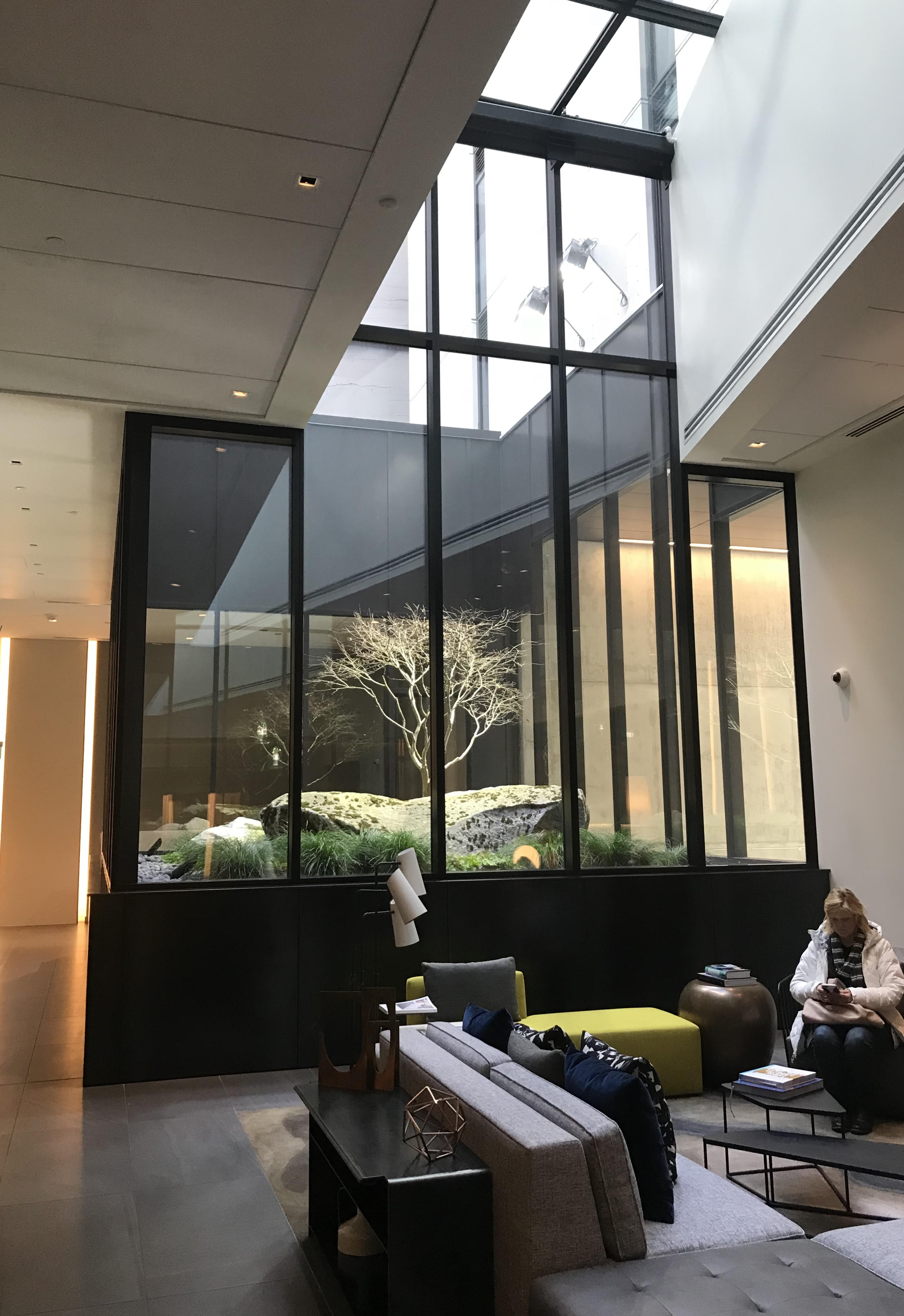
As I have mentioned before humans have a need to connect with other living things – people, animals and plants. We refer to this phenomenon as biophilia, a term coined by Edward Wilson in 1984. It can be hard for people to make this connection when the average person spends 93% of their time indoors.
It is even more challenging to make connections to nature in dense urban area where the street can be as lifeless as the inside of a building. This is why Central Park is so important to the vitality of New York City; why indoor-outdoor living has become a major trend in housing; and why pet ownership in the United States has dramatically increased.
This image was taken in the lobby of a high-rise condominium building in downtown Seattle. I affectionately call this “nature in a box.” At first it seems silly to carve out a space that is so valuable to place a rock, a small tree and some ungroomed grass. What is equally remarkable is the building must have been designed around this small patch of dirt to ensure it received enough sunlight to sustain life.
Like a Japanese rock garden this space is not to be physically inhabited but rather occupied only by one’s mind and imagination. This space is small yet extremely powerful. If this space were accessible it would undoubtedly be visited by every dog in the building.
No, this tiny, precious, sliver of nature was placed in a protective jewel box. As you enter the building off the street in an automobile you are at eye level with the tree until you dip beneath it to find your parking space. As a pedestrian you must pass by it every time you enter or exit the building. By day it filters natural light inside the heart of the building and in the evening it is lit becoming a giant glowing night-light. It sets a tone, provides a calming feeling, changes one’s frame of mind and, as a consequence, alters the energy inside the building. It is a small potent move that like a catalyst alters the very DNA of the building.
